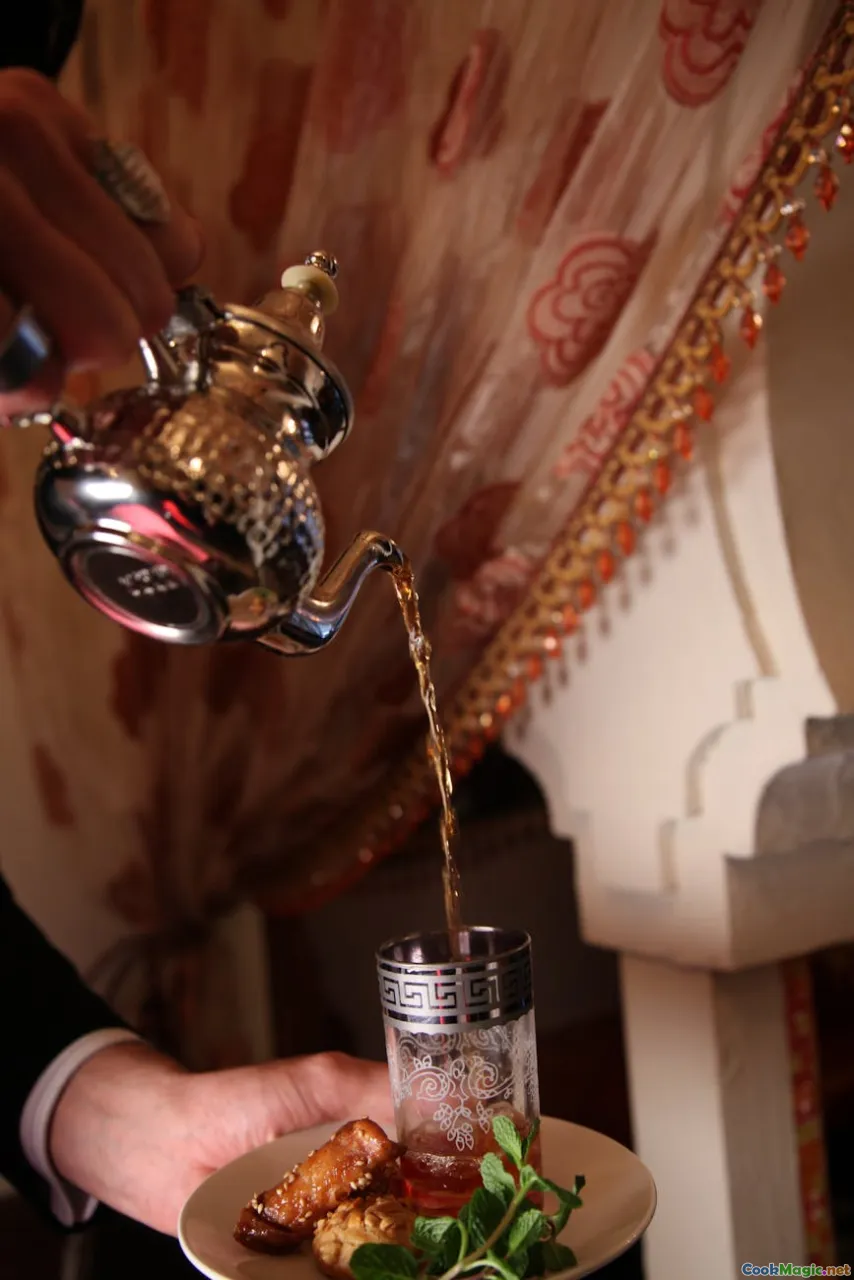The Role of Mint Tea in Moroccan Culture
8 min read Discover the deep cultural significance of mint tea in Morocco, from social rituals to hospitality, and experience its sensory allure firsthand. April 29, 2025 07:00
The Role of Mint Tea in Moroccan Culture
Morocco, a land where ancient traditions intertwine with vibrant daily life, is renowned for its rich tapestry of cultural practices. Among these, the ritual of serving mint tea stands out as a symbol of hospitality, friendship, and social harmony. To the untrained eye, it might appear as merely a refreshing beverage, but in Morocco, mint tea is a living, breathing cultural phenomenon—an aromatic experience that embodies centuries of history, tradition, and communal identity.
An Introduction to Moroccan Mint Tea: More Than Just a Drink
Imagine walking into a bustling Moroccan riad or a humble family home. The air is thick with the scent of fresh mint, sweetened green tea, and the warmth of welcoming smiles. The ritual begins with a masterful preparation, where a gleaming silver teapot boils over a small charcoal stove, bubbling with bright green tea leaves. Fresh sprigs of mint are added generously, their invigorating aroma filling the space.
As the tea is poured into tiny, delicate glasses, it glistens with a luminous green hue—an invitation to indulge all senses. The first sip is both soothing and exhilarating; the subtle bitterness of the green tea perfectly balanced by the cooling, aromatic mint and a generous drizzle of sugar.
This sensory experience is at the heart of Moroccan hospitality and social life—a tradition that transcends generations and geographical boundaries.
Historical Roots of Moroccan Mint Tea
The story of Moroccan mint tea is intertwined with the broader history of tea in North Africa and the Middle East. Originating from Chinese and Indian traditions, tea arrived in Morocco via trade routes centuries ago, gradually evolving into a unique cultural emblem.
During the Alaouite dynasty in the 17th and 18th centuries, tea drinking became associated with status and social cohesion. The Moroccan royal court adopted and adapted the practice, turning it into an art form. Over time, the ritual of preparing and serving mint tea became a symbol of hospitality, respect, and friendship—values deeply embedded in Moroccan society.
Interestingly, the use of mint was not merely for its aroma but also for its medicinal properties, believed to aid digestion and refresh the mind—a tradition that persists today.
The Social and Cultural Significance of Mint Tea
A Ritual of Hospitality
In Morocco, offering mint tea is a gesture of warmth and respect. Whether welcoming a guest into your home, hosting a celebration, or conducting business negotiations, serving tea is almost ceremonial. It signifies openness, generosity, and a desire to forge bonds.
The custom is so ingrained that refusing a cup can be considered impolite, making the act of serving and accepting mint tea a vital social ritual.
A Symbol of Community and Connection
In villages and cities alike, sharing mint tea fosters a sense of community. It’s common to see groups of men and women gathered around a table, exchanging stories over steaming glasses of tea. This shared experience reinforces social ties and preserves oral traditions.
Celebrations and Festivals
Mint tea also plays a central role in Moroccan celebrations—weddings, religious festivals, and family gatherings. The process of preparing and serving tea becomes a performance, with hostesses and hosts showcasing their skills in pouring and presentation.
The Art of Preparing and Serving Mint Tea
Ingredients and Equipment
- Green Tea (preferably Chinese gunpowder tea)
- Fresh Mint Leaves
- Sugar
- A traditional Moroccan teapot (brass or silver)
- Small, tulip-shaped glasses
- A heat source (charcoal stove)
Step-by-Step Preparation
- Rinsing the Tea: Start by rinsing the green tea leaves with boiling water to remove any bitterness.
- Brewing the Base: Add a few teaspoons of tea leaves into the teapot, then pour boiling water over them. Let it steep for a minute.
- Adding Sugar and Mint: Pour out the rinse water, then add a generous amount of sugar—often equal to or more than the tea itself—and a handful of fresh mint leaves.
- The Pouring Ritual: Pour hot water over the mixture, then pour the tea into glasses from a height to aerate it. Repeat this process a few times, which helps develop a rich, frothy top.
- Serving: Serve the tea in small glasses, allowing the drinker to savor the complex layers of flavor.
The Cultural Touch
The way the tea is poured—the height and speed—are considered an art, symbolizing generosity and skill. The frothy top, known as "risha," signifies the host’s mastery and care.
Personal Reflections and Anecdotes
Having traveled through Morocco, I’ve experienced firsthand how mint tea acts as a bridge across cultures and generations. I recall a chilly evening in a Berber village where an elderly woman insisted I join her for tea. As she poured the steaming brew, her eyes sparkled with pride and warmth.
The tea was sweet, cool mint leaves floated on top, and the aroma enveloped us in a comforting embrace. That simple act of sharing tea became a profound lesson in hospitality and human connection—a reminder that food and drink are about more than sustenance; they are about creating bonds.
In Conclusion
Moroccan mint tea is far more than a beverage; it is a living tradition that encapsulates the spirit of a nation. It embodies hospitality, community, artistry, and history—all brewed into a simple glass of tea. Whether served during a bustling market day or a quiet family evening, mint tea remains a symbol of Morocco’s warm heart and enduring culture.
Next time you sip a glass of mint tea, remember—you are partaking in a centuries-old ritual that has nourished souls and strengthened bonds across generations. So, raise your glass, and toast to the timeless charm of Moroccan hospitality and the fragrant, invigorating magic of mint tea.









